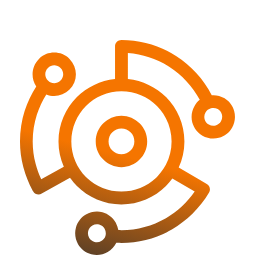In the dynamic realm of delivery systems, DEPTSCAPE emerges as a transformative solution, leveraging cutting-edge drone technology to revolutionize logistics. With a commitment to efficiency and precision, DEPTSCAPE optimizes last-mile deliveries by deploying drones equipped with advanced navigation and sensing capabilities. These unmanned aerial vehicles ensure swift and secure transport, navigating diverse terrains and circumventing traditional transportation challenges. By streamlining delivery routes and minimizing transit times, DEPTSCAPE not only enhances operational efficiency but also contributes to the reduction of carbon emissions associated with traditional delivery methods. The integration of DEPTSCAPE into the delivery ecosystem represents a paradigm shift towards a faster, more sustainable, and technologically advanced future.
Delivery
How Depthscape Helps in Delivery system

Applications
Drones equipped with a delivery system play a crucial role in the timely delivery of medical supplies, especially in remote or disaster-stricken areas. They can transport essential medicines, vaccines, blood, and other medical necessities swiftly, overcoming geographical barriers. In emergency situations, such as natural disasters or pandemics, drones can ensure that life-saving resources reach those in need promptly, potentially saving lives by reducing delivery times

Drones can play a pivotal role in the distribution of vaccines, especially in regions with challenging terrain or limited infrastructure. The need for timely and efficient vaccine delivery has become particularly crucial during global health crises, such as pandemics. Drones can ensure the rapid transportation of vaccines to remote areas, helping to expedite vaccination campaigns and improve overall public health outcomes.

Drones can revolutionize organ transplantation by providing a rapid and efficient means of transporting organs from donors to recipients. The time sensitivity of organ transplants requires swift transportation, and drones can significantly reduce the transit time compared to traditional methods. This application can enhance the success rates of organ transplants and improve overall organ allocation processes.

Within the manufacturing sector, drones can optimize logistics and streamline the delivery of parts and components between different sections of a factory or even between different manufacturing facilities. This application can enhance efficiency in production processes, reduce downtime, and contribute to just-in-time manufacturing practices. Drones can be programmed to transport small to medium-sized components, improving overall production speed and reducing operational costs

Drones can be employed to distribute agricultural resources, such as seeds, fertilizers, and pesticides, across large farming areas. This enhances precision farming practices by delivering resources exactly where they are needed, optimizing crop yield and reducing waste. The efficient distribution of agricultural inputs via drones contributes to sustainable farming practices and helps farmers maximize their productivity

The e-commerce industry can benefit immensely from drone delivery systems in supply chain management. Drones can streamline the last-mile delivery process, ensuring faster and more cost-effective delivery of goods to customers. This not only enhances customer satisfaction but also optimizes the overall efficiency of the supply chain, reducing congestion and environmental impact associated with traditional delivery methods

PROS
One of the primary advantages of using drones in delivery systems is the significant improvement in speed and efficiency. Drones can navigate through the air directly to their destination, avoiding traffic congestion and physical obstacles that ground-based vehicles might encounter. This enables faster delivery times, particularly for urgent or time-sensitive items.
Drones can offer cost-effective solutions for last-mile delivery, especially in scenarios where traditional delivery methods are expensive or logistically challenging. Operating drones can be more economical than maintaining a fleet of ground vehicles and can reduce fuel and labor costs associated with conventional delivery services
Drones are particularly beneficial in reaching remote or hard-to-access locations. This is crucial for delivering medical supplies, vaccines, and other essentials to rural or disaster-stricken areas where conventional transportation infrastructure may be lacking.
Compared to traditional delivery vehicles, drones have a lower environmental footprint. They operate on electricity, which can be sourced from renewable energy, and their smaller size and weight contribute to reduced energy consumption.
Drones can be programmed with high precision, ensuring accurate deliveries to specified locations. This precision minimizes the risk of errors in delivery addresses and enhances the overall safety of the delivery process.
Drones offer flexibility in adapting to diverse delivery needs. They can be easily deployed for various purposes, such as medical deliveries, e-commerce packages, or agricultural resource distribution.
The use of drones introduces innovative technological solutions into the delivery process. This includes real-time tracking, automated route planning, and advanced communication systems.
In humanitarian and emergency situations, drones can rapidly deliver critical supplies, including food, water, and medical aid. Their ability to quickly reach affected areas can make a significant difference in disaster response, providing timely assistance to those in need and potentially saving lives.

